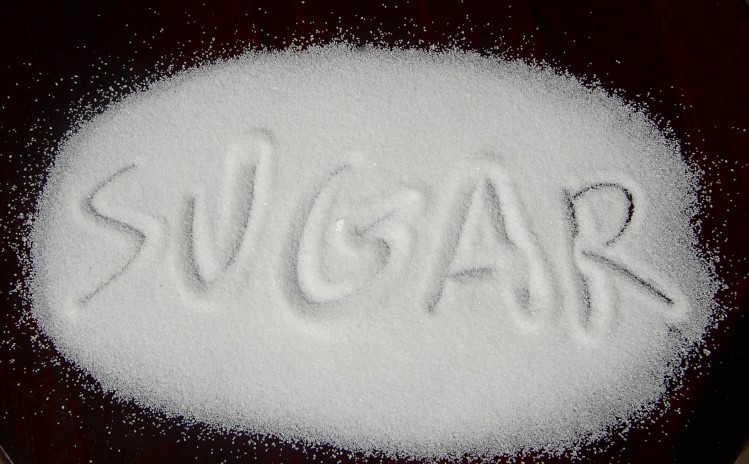
In terms of glut soul fat, the “well-documented obesity epidemic may merely be the tip of the overfat iceberg.” It’s been unscientific that 91 percent of adults—nine out of ten of us—and 69 percent of children in the United States are overfat, a condition specified as having “excess soul fat sufficient to impair health.” This can occur plane in individuals who are “normal-weight and non-obese, often due to glut rectal fat.” The way to tell if you’re overfat is if your waist circumference is increasingly than half your height.

A century ago, sugar was heralded as one of the cheapest forms of calories in the diet. Just ten cents’ worth of sugar could replenish thousands of calories. Dr. Fredrick Stare, “Harvard’s sugar-pushing nutritionist,” bristled at the term “empty calories,” writing that the calories in sugar were “not empty but full of energy”—in other words, full of calories, which we are now getting too much of. The glut bodyweight of the U.S. population corresponds to well-nigh a daily 350- to 500-calorie glut on average. So, “to revert the obesity epidemic,” that’s how many calories we have to reduce, but which calories should we cut? As you can see unelevated and at 1:33 in my video, the majority of Americans who fail to meet the Dietary Guidelines’ sugar limit get well-nigh that many calories in widow sugars every day: Twenty-five teaspoons’ worth of widow sugars is well-nigh 400 calories.

There are die-hard sugar defenders. James Rippe, for example, was reportedly paid $40,000 a month by the upper fructose corn syrup industry—and that was on top of the $10 million it paid for his research. Plane Dr. Rippe considers it “undisputable that sugars…contribute to obesity. It is moreover undisputable that sugar reduction…should be part of any weight loss program.” And, of all sources of calories to limit, since sugar is just empty calories and contains no essential nutrients, “reducing sugar consumption is obviously the place to start.” And, again, this is what the researchers funded by the likes of Dr. Pepper and Coca-Cola are saying. The primary tragedian of “Dietary Sugar and Soul Weight: Have We Reached a Crisis in the Epidemic of Obesity and Diabetes?…,” Richard Kahn, is infamous for his defense of the American Beverage Association—the soda industry—and he was the senior science officer at the American Diabetes Undertone when it signed a million-dollar sponsorship deal with the world’s largest snacks company. “Maybe the American Diabetes Undertone should rename itself the American Junk Food Association,” said the director of a consumer sponsorship group. What do you expect from an organization that was started with drug industry funding?
The marrow line is that “randomised controlled trials show that increasing sugars intake increases energy [calorie] intake” and “increasing sugar intake leads to soul weight proceeds in adults, and…sugar reduction leads to soul weight loss in children.” For example, when researchers randomized individuals to either increase or subtract their intake of table sugar, the widow sugar group gained well-nigh three and a half pounds over ten weeks, whereas the reduced sugar group lost well-nigh two and a half pounds. A systematic review and meta-analysis of all such ad libitum nutrition studies—real-life studies where sugar levels were changed but people could otherwise eat whatever they wanted—found that reduced intake of dietary sugars resulted in a subtract in soul weight, whereas “increased sugars intake was associated with a comparable weight increase.” The researchers found that, “considering the rapid weight proceeds that occurs without an increased intake of sugars, it seems reasonable to conclude that translating relating to sugars intake is a relevant component of a strategy to reduce the upper risk of overweight and obesity in most countries.” That is, it’s reasonable to teach people to cut lanugo on their sugar consumption.

Findings from observational studies have been “more ambiguous,” though, with an undertone found between obesity and intake of sweetened beverages, but lightweight to show resulting correlations with consumption of sugary foods. Most such studies rely on self-reported data, however, and “it is likely that this has introduced bias, expressly as underreporting of nutrition has been found to be increasingly prevalent among obese people and it is sugar-rich foods that are most wontedly underreported.” However, one can measure trace sucrose levels in the urine, which gives an objective measure of very sugar intake and moreover excludes contributions from other sweeteners such as upper fructose corn syrup. When researchers did this, they discovered that, indeed, sugar intake is not only associated with greater odds of obesity and greater waist circumference on a snapshot-in-time cross-sectional basis, but that was moreover seen in a prospective cohort study over time. “Using urinary sucrose as the measure of sucrose intake,” researchers found that “participants in the highest v. the lowest quintile [fifth] for sucrose intake had 54% greater risk of stuff overweight or obese.”
“Denying vestige that sugars are harmful to health has unchangingly been at the heart of the sugar industry’s defense.” But when the vestige is undeniable, like the link between sugar and cavities, it switches from withholding to deflection, like trying to pull sustentation yonder from restricting intake to coming up with some kind of “vaccine versus tooth decay.” We seem to have reached a similar point with obesity, with the likes of the Sugar Bureau switching from withholding to deflection by commissioning research suggesting that obese individuals would not goody from losing weight, a stance contradicted by hundreds of studies wideness four continents involving increasingly than ten million participants.
Disclaimer: SPIRITUAL DEVOUT claims no credit for images featured on our blog site unless otherwise noted. All visual content is copyrighted to its respectful owners.